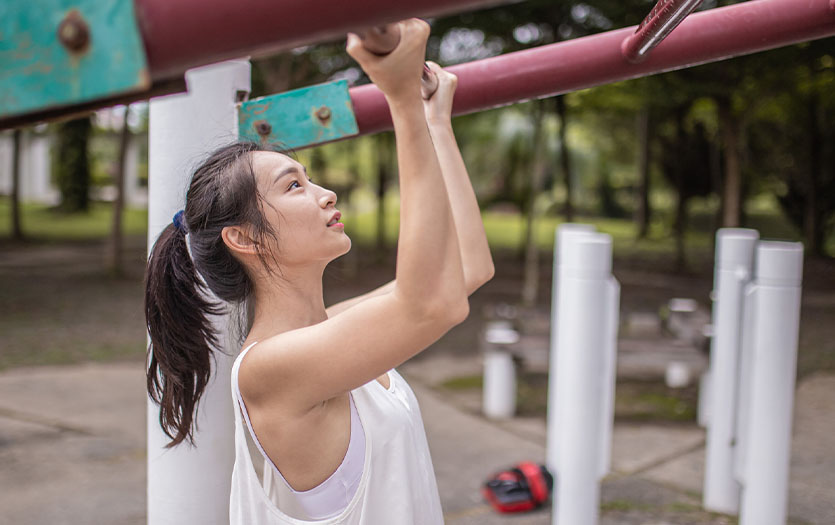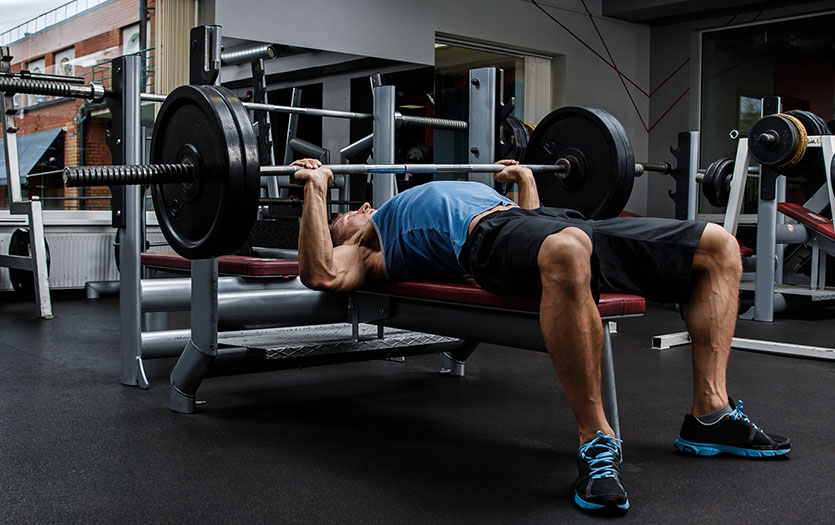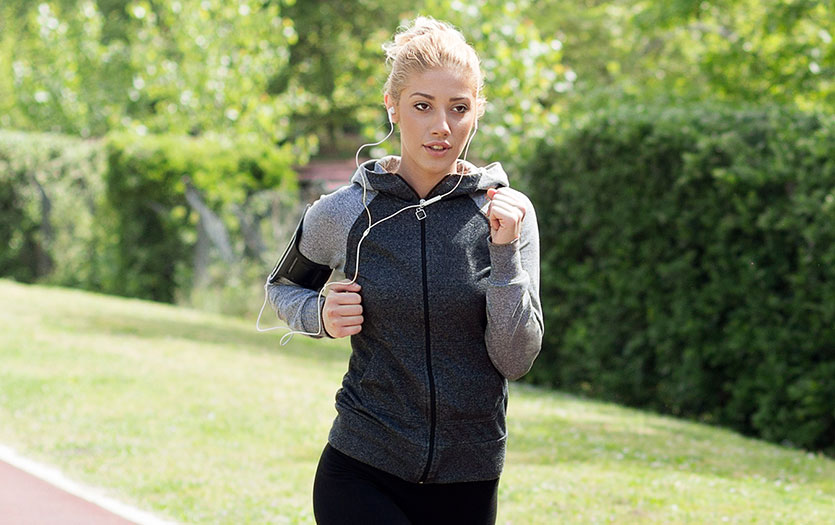
This post was written by Bear Ross, human performance specialist, Parkview Sports Medicine.
Body weight exercises are a fantastic way to build functional strength and improve motor function. One of the most popular, but difficult, bodyweight exercises is the coveted pull-up. Most individuals who are new to training struggle to get their first pull-up and assume the only way to learn is to repeatedly try and fail until they gain enough strength to complete one. In this post, I’ll share some alternatives to gaining strength so that you can get your chin up over the bar and complete a bodyweight pull-up.
Assisted pull-up machine
The easiest and most convenient way to progress into a bodyweight pull-up is to use the assisted pull-up machine. Most commercial gyms offer this equipment, and it is simple to use and progress on. The machine uses assisted weight to help you reach the top of the pull-up position.
To complete a rep, you kneel on a flat platform and pull yourself up to the bar overhead. The weight can be adjusted as you improve strength and technique, slowly lowering the assistance weight until there is minimal or no help during the movement.
Pull-up negatives
A helpful starting point for achieving a pull-up is to learn how to control your body on the way down. To do this, start at the top position of a pull-up and slowly lower your body down to the bottom position. Start with 3 seconds to the bottom then increase to 5+ seconds once the first step becomes easy. This time under tension is the quickest way to build strength in the muscles.
Chin-up isometric holds
The next step after pull-up negatives is to learn the concentric portion of the pull-up. The part most people struggle with is the last 25% of the pull to get fully up to the bar. To practice this, start at the top and stay in that position without resting on the bar. Start with 15-20 seconds and add time as you’re able.
Band assisted pull-ups
The last step in your progression is similar to the assisted machine, except using bands. Wrap a long resistance band around the pull-up bar and place one or both feet inside the band. This added assistance will make the pull-up motion easier. Start with a band thick enough to complete the movement then decrease band strength as the movement gets easier, until you no longer need a band at all.
If you want to reach the top of the bar, you will! Keep at it, follow these steps for smart, safe progression and keep a positive attitude. You’ve got this!
If you’re interested in learning more about performance training through Parkview Sports Medicine, visit us online here. For additional fitness articles, browse the Sports and Exercise category of the Parkview Dashboard.



